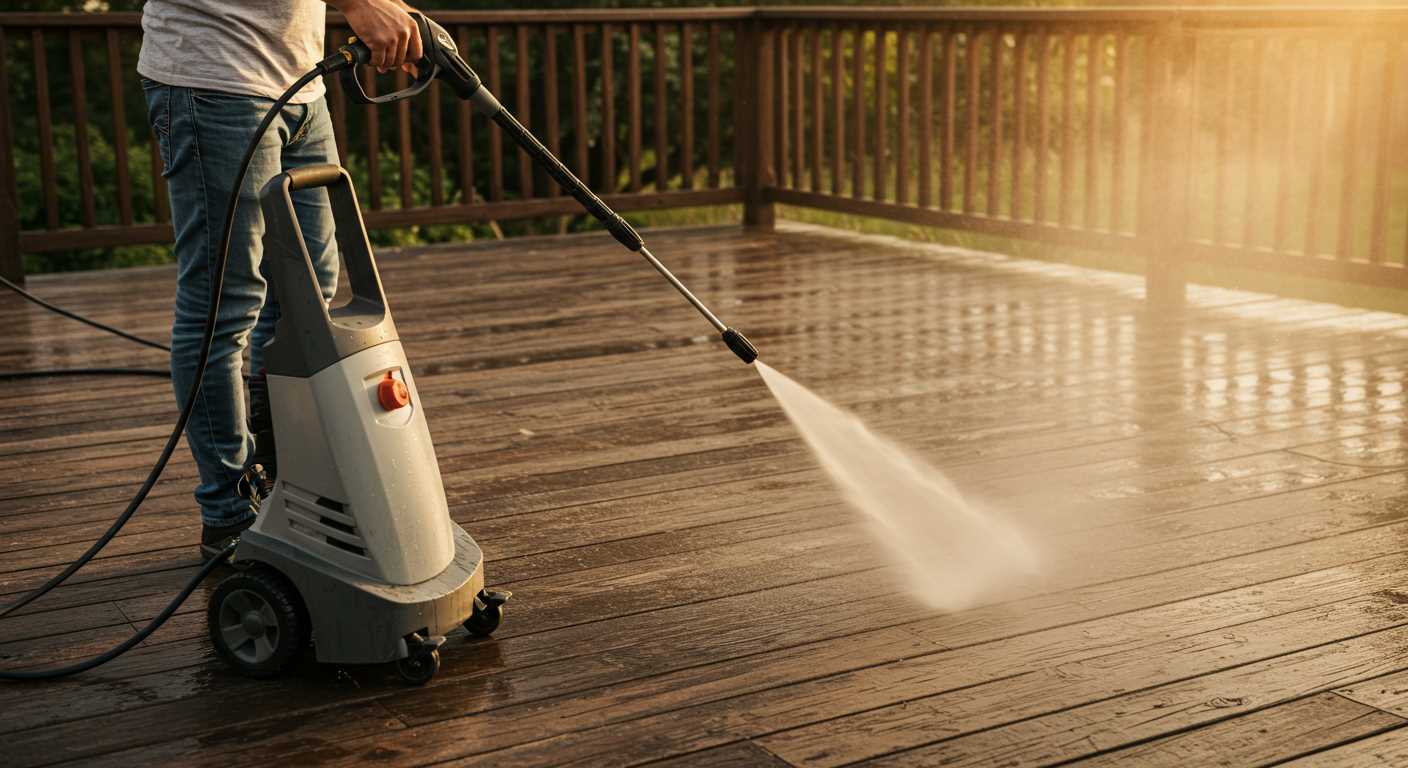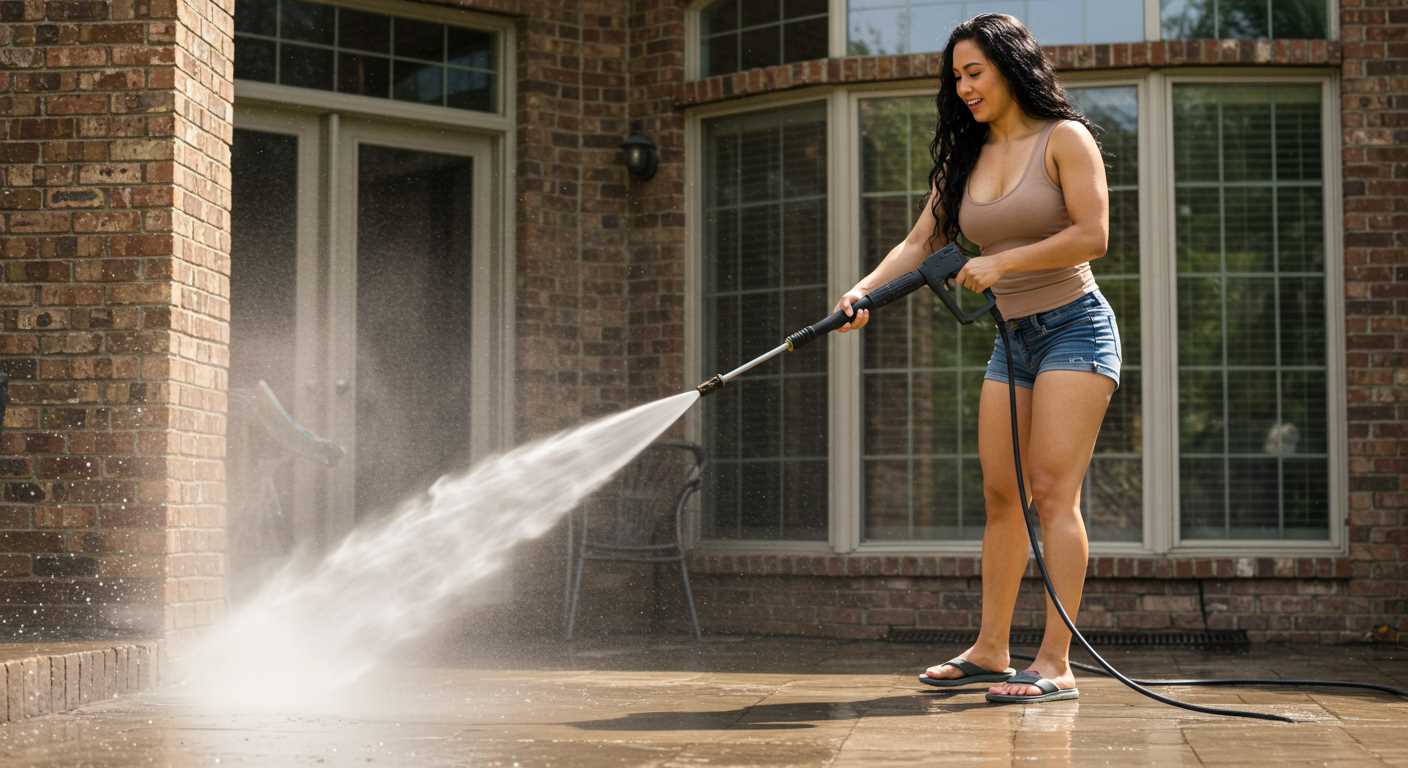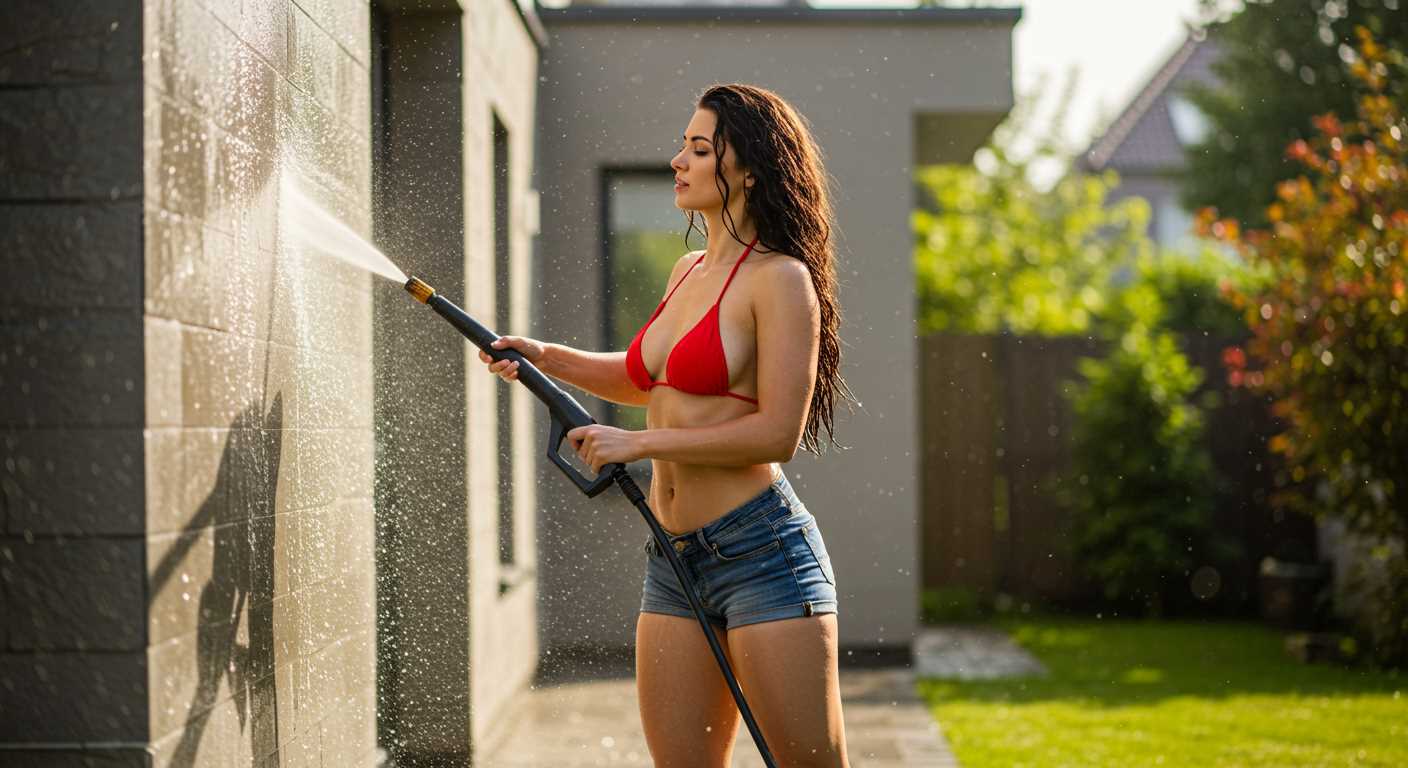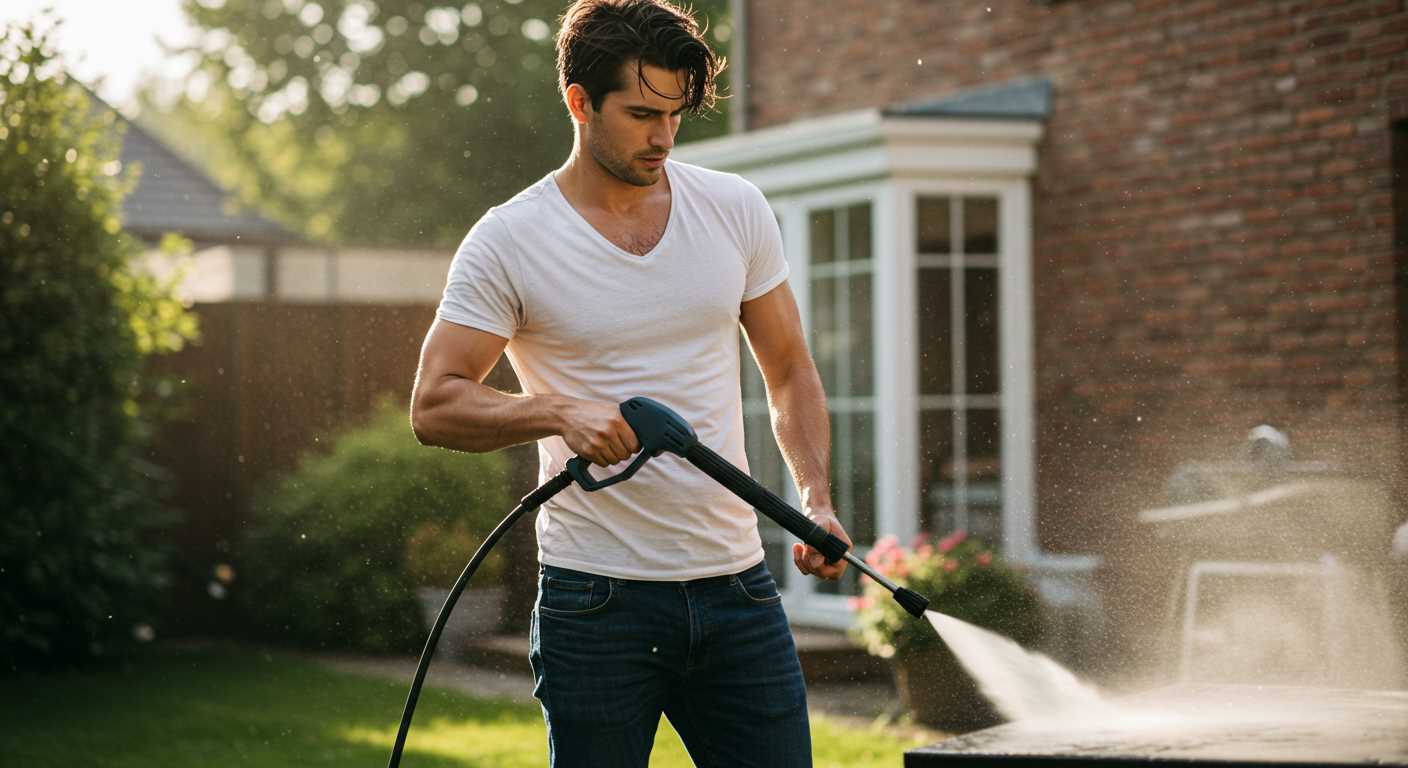



If you’re experiencing a reduction in the water force during your cleaning tasks, the first step is to inspect your hose and connections. Ensure there are no kinks or leaks. A damaged hose can significantly impact the performance of your unit, hindering the flow of water and reducing effectiveness.
Next, examine the nozzle. A clogged or worn nozzle can restrict the flow, leading to less force. Cleaning or replacing the nozzle can often remedy this issue. I recommend having a few replacement nozzles on hand, as they can wear out faster than expected.
Another key area to check is the inlet filter or screen. Debris buildup can obstruct water intake. Remove and clean it thoroughly to restore optimal flow. Regular maintenance of these components is critical to avoiding performance problems and extending the lifespan of your device.
Lastly, it’s wise to evaluate the pump itself. If you’ve ruled out external factors, the pump may require servicing or could be malfunctioning. A worn-out pump can lead to inadequate performance. In such cases, consulting the manufacturer’s manual or seeking professional assistance is advisable.
Potential Reasons for Reduced Output
Check for any obstructions in the nozzle or the detergent intake tube. Clogs can significantly diminish performance. Make sure to inspect the spray tip; a worn or damaged tip affects water flow.
Evaluate the water supply. Insufficient flow from the source can lead to disappointing results. Ensure the garden hose is not kinked and the tap is fully open.
Leaks in the System
Inspect hoses and connections for leaks. Even minor cracks can lead to significant drops in force. Any visible damage should be addressed immediately.
Temperature Concerns

If your unit has an overheating issue, it may throttle itself to prevent damage. Allow adequate cooling time between uses, especially during hot weather.
- Monitor the water temperature; hot water can trigger protection mechanisms.
- Consider using a thermal relief valve to prevent overheating.
If the machine seems to operate normally but still fails to provide adequate output, checking the pump’s condition can be beneficial. Look for signs of wear or unusual sounds during operation.
- Regular maintenance is key; clean filters and ensure lubrication are adequate.
- If problems persist, consulting a professional for an assessment may save time and effort.
Common Causes of Low Flow in Power Cleaners

Insufficient output can often stem from the following issues:
1. Blocked Nozzle or Hose
Clogs in the nozzle or hose prevent optimal water flow. Inspect these components regularly. Clean the nozzle with a pin or similar object, and replace hoses if cracks or blockages are present.
2. Faulty Pump Seals

Pump seals wear out, leading to reduced effectiveness. Inspect these seals for signs of wear or damage, as replacement can revitalise performance.
3. Incorrect Nozzle Size
Using the wrong nozzle size can significantly affect output. For instance, a nozzle too small restricts flow, while one too large can decrease pressure. Always match the nozzle to the required cleaning task.
4. Low Water Supply

A garden hose that doesn’t provide sufficient water supply will hamper performance. Ensure the inlet is fully open and check for kinks or obstructions in the hose.
5. Air Leaks or Fittings Issues
Check all connections and fittings for air leaks, which can disrupt flow. Tighten or replace fittings as necessary to maintain a solid connection and prevent air entry.
| Issue | Solution |
|---|---|
| Blocked Nozzle or Hose | Clean or replace as needed |
| Faulty Pump Seals | Inspect and replace damaged seals |
| Incorrect Nozzle Size | Select the right size for the task |
| Low Water Supply | Check hose for blockages and ensure proper flow |
| Air Leaks or Fittings Issues | Tighten or replace fittings as needed |
Regular maintenance and inspections can prevent many flow issues. Quickly address any signs of malfunction to ensure efficient operation.
Diagnosing Blockages in Hoses and Nozzles
Start by examining the hose for any visible kinks or sharp bends that could restrict the flow of water. Lay the hose flat, ensuring it runs straight from the source to the gun. If the hose appears intact, check for blockages using the following methods.
Checking Nozzles
Nozzle inspection is crucial. Remove the nozzle from the lance and use a fine needle or a toothpick to clear out any debris lodged inside. Rinse it with water to ensure it’s completely clear before reattaching. Test the nozzle to verify that water sprays evenly without obstructions.
Examining the Hose Internally
Perform a thorough internal inspection of the hose. Disconnect it from both the machine and the spray gun. Run water through both ends to identify any flow restrictions. If water does not flow freely, consider replacing the hose. Persistent clogs might also stem from contaminants entering through the source water, so using a filter can prevent future complications.
Checking the Inlet Filter for Clogs
Start by inspecting the inlet filter connected to the water supply hose. A blocked filter often restricts water flow, impacting performance significantly. To check, follow these steps:
- Disconnect the water supply from the equipment.
- Locate the inlet filter, usually found at the entry point of the water line.
- Remove the filter carefully, taking note of its orientation for reinstallation.
- Examine the filter for dirt and debris. If clogged, clean it with water or replace it if damaged.
Ensure the filter is free from obstructions before reattaching it. If your unit has a strainer or mesh screen, ensure it is also clear of sediments.
Maintenance Tips
- Regularly inspect the filter as part of your routine maintenance schedule.
- Consider using a pre-filter or screen on the water supply hose to catch debris before it reaches the inlet filter.
- Always use clean water from a suitable source to minimise the risk of clogging.
Performing these checks and maintenance can help maintain optimal functionality and extend the lifecycle of your equipment.
Identifying Issues with the Pressure Washer Pump
Focus on the pump assembly as a primary source of reduced flow. Inspect for wear and damage on seals, which can lead to leaks affecting performance. A faulty pump may result from internal corrosion or wear-and-tear, typical in high-use scenarios. Regular maintenance is key; consider replacing worn components proactively to enhance longevity.
Check for Air Leaks
Examine all connections for air leaks, which disrupt normal operation. Tighten fittings and replace any cracked hoses to maintain optimal suction. A tight seal ensures that the pump can draw water effectively, minimizing drop in operational capacity.
Inspect Pump Oil Levels
Inspect the oil levels in the pump if applicable. Insufficient lubrication can restrict movement within the assembly, causing diminished output. Regularly check and top up oil, and replace it as recommended, to ensure smooth operation and avoid extensive damage.
Finally, consider the pump’s compatibility with the equipment. Mismatched components can result in inadequate performance, so ensure that all parts are designed to work together. Addressing these factors will significantly improve functionality and restore expected performance levels.
Understanding the Role of Water Supply in Pressure Loss
Ensure your supply is adequate. A minimal flow rate can drastically impact performance. I recommend checking your water source’s volume. Ideally, at least 8 litres per minute should be available for optimal operation.
Assessing Water Quality
Contaminants in the water can lead to clogs within the internal components. Regularly inspect your source for sediment or debris. A filter specifically designed for clean supply lines can prevent this issue from arising.
Connection and Hose Integrity
Inspect hoses and connections thoroughly. Any kink or damage can cause significant flow restrictions. Ensure all connections are tight and leak-free, as even minor leaks can reduce water intake, resulting in reduced output forces.
Additionally, if you’re using a long hose, consider a thicker diameter to improve water flow. This simple adjustment may drastically enhance performance during use.
In summary, regularly maintain and monitor your water supply to keep your cleaning equipment functioning at its best.
Examining the Condition of Seals and O-Rings
Regularly inspect seals and O-rings for wear and tear. These components are critical for maintaining water circulation and pressure. If you notice any cracks, hardening, or deformities, replace them immediately to ensure optimal functionality.
Pay attention to the material quality; rubber O-rings can degrade over time, especially when exposed to harsh chemicals or extreme temperatures. Using replacement parts made from high-quality materials extends the lifespan and reliability of your unit.
During inspection, look for leaks around connections where hoses meet the pump and other components. Any sign of moisture accumulation indicates a failing seal. Tightening the fittings may provide a temporary fix, but replacing damaged seals is essential for long-term performance.
I recommend using a silicone grease during reassembly to enhance the longevity of these parts. Apply a thin layer to new seals and O-rings to prevent them from sticking and ensure a proper seal. Regular maintenance of these items will significantly reduce the chances of a drop in output functionality.
Steps to Restore Pressure and Prevent Future Issues
Check for kinks and bends in the hose. Straightening these can significantly improve the flow and performance.
Inspect the nozzle for blockages. A clogged nozzle can severely restrict water flow. Clean it thoroughly with water or a brush.
If the inlet filter is dirty, remove and clean it. A clean filter ensures unrestricted water intake, which is vital for optimal function.
Examine the pump. Low-quality seals may cause leaks, leading to reduced water output. Replace any damaged seals to maintain proper operation.
Ensure your water supply is adequate. A minimum flow rate and consistent supply are necessary for successful cleaning tasks. Adjusting your water source may be necessary.
Keep an eye on O-rings. Inspect them for wear and tear, replacing them when damaged. Proper sealing preserves performance.
Store the unit in a suitable environment. Protect it from extreme temperatures and moisture which can degrade components over time.
Regular maintenance is key. Service your equipment as per the manufacturer’s guidelines to keep it running smoothly and effectively.
Consider using high-quality detergents specifically designed for your equipment. This can help protect internal components and enhance cleaning capabilities.
If persistent issues arise after following these steps, consulting a professional technician may be necessary. Their expertise can identify underlying problems that require attention.









